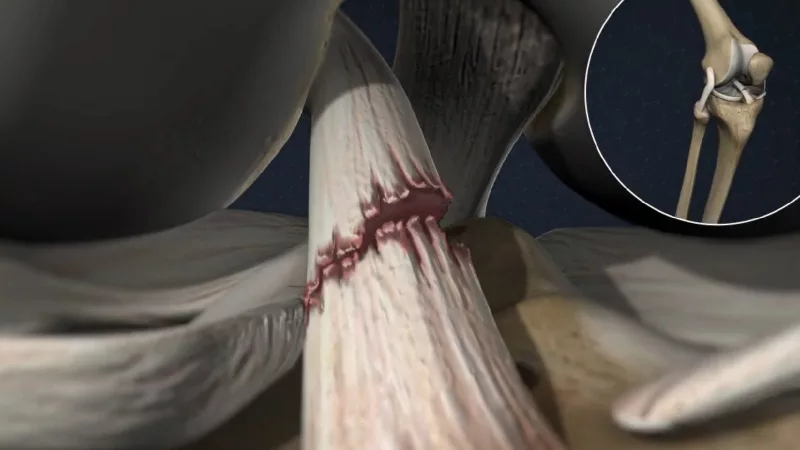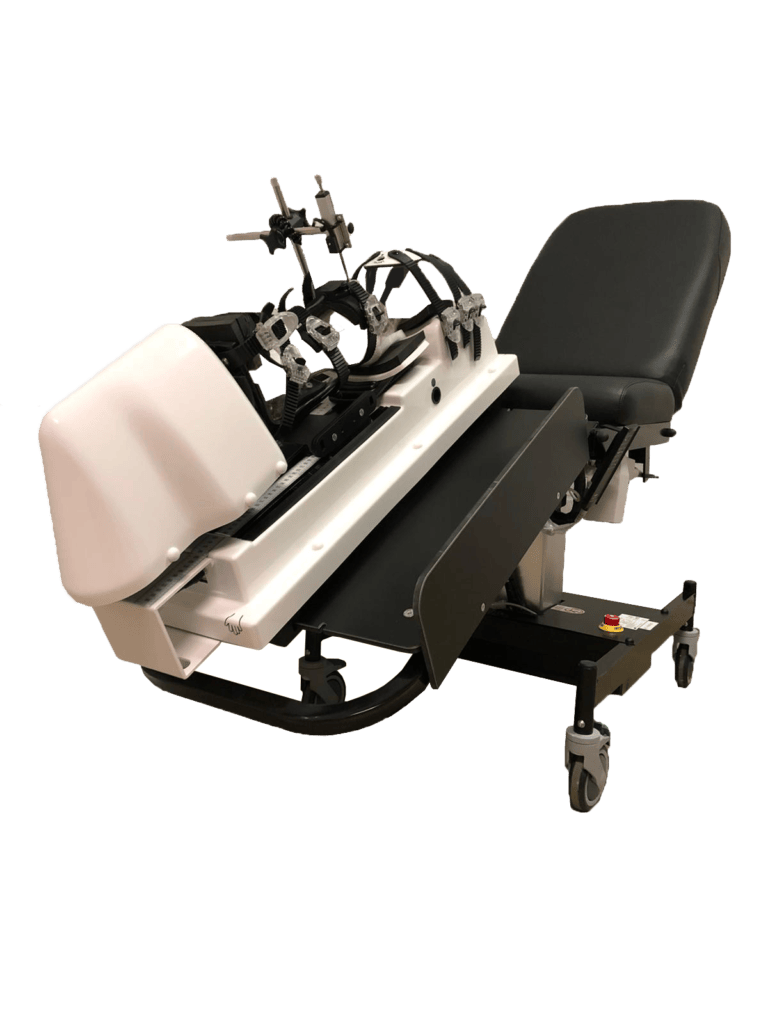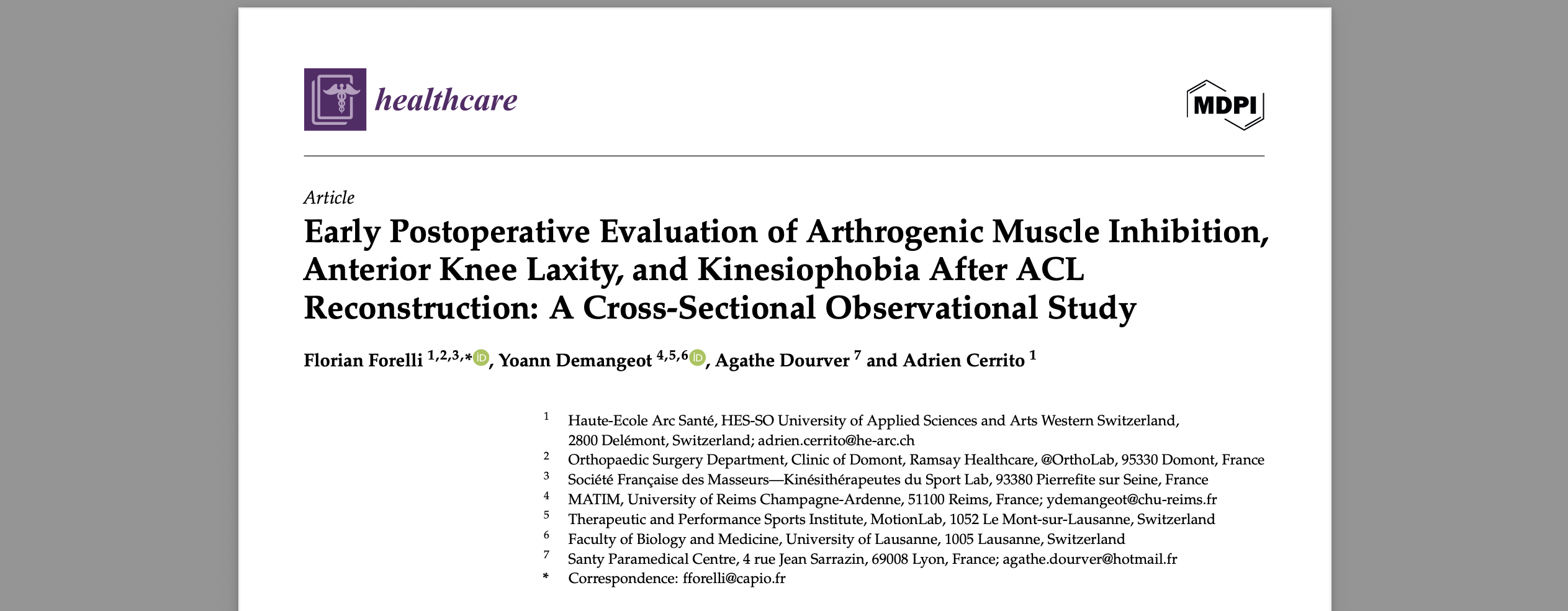In the realm of sports and active lifestyles, injuries are an unfortunate reality that many individuals face. Among these, anterior cruciate ligament (ACL) injuries stand out due to their frequency and the significant impact they can have on one’s physical capabilities and overall quality of life. The ACL is a critical ligament that provides stability to the knee joint, enabling a wide range of movements essential for daily activities and athletic performance. Given the ligament’s pivotal role, injuries to the ACL are not only painful but can also lead to prolonged periods of rehabilitation and, in some cases, necessitate surgical intervention.
The onset of an ACL injury is often sudden, marked by a “popping” sensation in the knee, followed by swelling, pain, and a feeling of instability. These symptoms can sideline athletes and active individuals, presenting challenges in diagnosis, treatment, and long-term knee health. Understanding the causes, risk factors, and prevention strategies associated with ACL injuries is crucial for both individuals at risk and healthcare providers. This knowledge not only aids in mitigating the risk of such injuries but also informs effective treatment pathways that cater to the unique needs of each patient.
This article aims to provide a comprehensive overview of ACL injuries, from the initial diagnosis and treatment options to rehabilitation and preventative measures. By equipping readers with a thorough understanding of ACL injuries, we aspire to empower individuals to make informed decisions about their health and athletic pursuits, ultimately fostering a safer and more resilient athletic community.
I. Symptoms & Causes
1.1 Overview
An injury to the anterior cruciate ligament, commonly referred to as the ACL, entails either a tear or sprain of this crucial ligament. The ACL is a vital component in the complex structure of the knee, playing a significant role in connecting the femur, or thigh bone, to the tibia, which is the shinbone. Such injuries are predominantly seen in activities demanding abrupt halts or shifts in motion, including sports like soccer, basketball, football, and even activities such as downhill skiing that require significant jumping and landing maneuvers.
Individuals experiencing an ACL injury often report hearing a distinct pop or feeling a sensation akin to something popping within their knee. This is usually followed by symptoms such as swelling, a marked instability in the knee’s structure, and an inability to support weight due to intense pain. The knee’s compromised state post-injury renders it difficult for many to continue their activities without seeking proper medical attention.

The approach to treating an ACL injury varies greatly depending on its severity. Options range from engaging in a dedicated period of rest coupled with targeted rehabilitation exercises aimed at restoring both strength and stability to the knee, to undergoing surgical intervention where the damaged ligament is replaced, followed by a comprehensive rehabilitation process. Furthermore, engaging in a meticulously designed training program can play a critical role in minimizing the risk of succumbing to an ACL injury, by emphasizing the strengthening of the knee’s supporting structures and improving overall leg muscle balance.
1.2 Symptoms
Indications and manifestations of an ACL injury are varied but typically include the following key signs:
- The initial signal is often a distinct loud pop or a sensation akin to something popping within the knee, alerting to a significant event within the joint’s structure.
- This is closely followed by intense pain, rendering the individual unable to persist with the activity at hand due to the overwhelming discomfort.
- Quick onset of swelling around the knee emerges, indicative of inflammation and damage within the joint.
- Individuals may notice a reduced ability to move the knee, experiencing a constrained range of motion compared to their pre-injury state.
- A prevalent feeling of instability or weakness when applying weight on the affected leg, as if the knee might buckle under the pressure.
Further symptoms that might also present include:
- An evident difficulty in walking, particularly noticeable during attempts to pivot or navigate uneven terrains, stemming from the knee’s compromised ability to stabilize.
- The occurrence of clicking or popping noises during knee movement, suggesting abnormal ligament behavior.
- An unusual looseness within the knee joint (joint laxity), pointing to the critical stabilizing role the ACL once played now being diminished.
- Pain localized along the joint line, which may intensify when attempting movements such as rising from a seated position or ascending stairs.
- Challenges in executing actions that demand abrupt stops or swift directional changes, underscoring the ACL’s pivotal function in knee stability and movement control.
Understanding these symptoms can aid in promptly identifying an ACL injury, facilitating early intervention and appropriate management through a combination of physical examinations (Lachman Test), robotic arthrometer testing and diagnostic imaging (MRI).
1.3 Consulting a Healthcare Professional
It’s imperative to seek immediate medical attention if you experience any signs or symptoms indicative of an ACL injury following a knee incident. The knee is an intricate assembly of bones, ligaments, tendons, and various tissues collaborating for smooth joint function. Ensuring a swift and precise diagnosis is crucial to assess the injury’s gravity and to formulate an effective treatment plan. Early intervention can significantly impact the recovery trajectory, highlighting the importance of promptly addressing potential ACL injuries.
1.4 Understanding ACL Injury Causes

Ligaments, the robust bands of tissue that forge connections between bones, play a pivotal role in joint stability. The Anterior Cruciate Ligament (ACL), nestled in the knee’s interior, serves as a crucial connector between the femur (thighbone) and the tibia (shinbone), contributing significantly to knee joint stability.
ACL injuries are predominantly linked to sports and physical activities that exert considerable stress on the knee, such as:
- Cutting or suddenly changing direction while moving, which places immense strain on the knee.
- Pivoting when one’s foot is firmly grounded, a common move in many sports that can lead to stress on the knee.
- Landing in an unbalanced manner after a jump, which can disrupt the normal function and alignment of the knee joint.
- Halting abruptly, a motion that can unexpectedly load the knee with excessive force.
- Experiencing a direct hit to the knee or engaging in a collision, typical in contact sports like football, which can directly compromise the integrity of the ACL.
When the ACL incurs damage, it often results in either a partial or complete tear of the ligament. While severe injuries may involve the ligament being torn through, milder instances might merely stretch the ligament, thankfully leaving it intact.
1.5 Identifying Risk Factors for ACL Injuries
Several elements can elevate the likelihood of sustaining an ACL injury, encompassing:
- Gender-specific Risks: Females are at a higher risk, potentially due to anatomical differences, variations in muscle strength, and the influence of hormones on ligament properties.
- Sports Engagement: Involvement in specific sports, including soccer, football, basketball, gymnastics, and downhill skiing, inherently increases the risk due to the intense physical demands and movements these activities require.
- Physical Preparedness: Insufficient conditioning or poor physical fitness can predispose athletes to injuries, as their bodies might not be adequately prepared for the stresses encountered during sports.
- Movement Mechanics: Employing improper movement patterns, such as allowing the knees to cave inward during activities like squats, can significantly stress the knee joint and ligaments.
- Inappropriate Footwear: Shoes that do not provide proper support or fit incorrectly can alter movement dynamics, leading to increased strain on the knee.
- Equipment Quality: Utilizing sports equipment that is either poorly maintained or improperly adjusted, such as ski bindings that do not release correctly, can contribute to injury risk.
- Surface Type: Engaging in activities on artificial turf has been associated with a heightened risk of ACL injuries, likely due to the surface’s unique traction and interaction with footwear.
Understanding and mitigating these risk factors can play a critical role in preventing ACL injuries, emphasizing the importance of proper training, equipment, and awareness of individual risk profiles.
1.6 Potential Complications Following an ACL Injury
Individuals who suffer from an ACL injury face an increased likelihood of encountering osteoarthritis in the knee, a condition characterized by the degeneration of joint cartilage and underlying bone. Remarkably, the risk of developing arthritis persists even for those who undergo surgical intervention to reconstruct the damaged ligament.
The probability of arthritis manifestation is influenced by multiple factors, including:
- Severity of the Initial Injury: The more severe the original ACL injury, the greater the potential for joint damage and subsequent arthritis.
- Concurrent Knee Injuries: The presence of additional injuries within the knee joint, such as to the meniscus or other ligaments, can exacerbate the risk of developing osteoarthritis.
- Post-Treatment Activity Level: The degree and type of physical activity individuals engage in after treatment can also affect the likelihood of arthritis. High-impact activities might increase stress on the knee, potentially hastening the onset of arthritis.
Understanding these factors is crucial for those recovering from an ACL injury, as it underscores the importance of a carefully managed rehabilitation plan and lifestyle adjustments to mitigate the risk of long-term complications such as osteoarthritis.
1.7 ACL Injury Prevention Strategies
Implementing proper training and exercise routines is fundamental in decreasing the likelihood of sustaining an ACL injury. Specialists in sports medicine, such as sports medicine physicians, physical therapists, and athletic trainers, play a crucial role in offering assessments, providing tailored instruction, and offering feedback aimed at risk reduction.
Effective programs designed to minimize ACL injuries encompass:
- Core Strengthening Exercises: Focusing on the hips, pelvis, and lower abdomen to train athletes to prevent the knee from moving inward during squatting movements.
- Leg Muscle Strengthening: Specifically targeting the hamstring muscles to promote a balanced strength across the leg muscles, supporting knee stability and function.
- Technique-Oriented Training for Jumping and Landing: Emphasizing the importance of proper knee positioning and technique when engaging in jumping activities, to mitigate stress on the ACL.
- Pivoting and Cutting Movement Training: Enhancing technique during quick, agile movements to reduce undue strain on the knee ligaments.
- Comprehensive Strength and Technique Training: Strengthening the muscles of the legs, hips, and core, coupled with training that focuses on refining jumping and landing techniques and preventing inward knee movement, can be particularly beneficial in lowering the elevated risk of ACL injuries observed in female athletes.
By integrating these preventative measures into regular training regimens, athletes can significantly reduce their risk of ACL injuries, supporting long-term knee health and athletic performance.
1.8 Optimal Gear for Injury Prevention
Choosing the right gear for your sport is a critical step in injury prevention. This includes selecting appropriate footwear and padding that suits the specific demands and conditions of your activity. These items not only provide support and protection but also enhance performance by ensuring stability and reducing the risk of accidents.
For those who participate in downhill skiing, it’s vital to have your ski bindings adjusted by professionals. Correctly set bindings are crucial as they ensure your skis will release properly during a fall, significantly reducing the risk of knee injuries, including those to the ACL.
Although some athletes consider wearing a knee brace to prevent ACL injuries or mitigate the risk of re-injury post-surgery, current insights suggest that knee braces do not effectively prevent ACL injuries nor significantly diminish the risk of recurrence after surgical intervention. The selection of preventive gear should, therefore, focus on equipment proven to offer protection specific to the activity being undertaken.
II. Diagnosis & Treatment
2.1 Diagnosis of ACL Injuries
The process to diagnose an ACL injury begins with a comprehensive physical examination, where your doctor will evaluate the knee for swelling and tenderness by comparing your injured knee with the uninjured one. Additionally, your knee may be moved into various positions to thoroughly assess the range of motion and the overall functionality of the joint.
While a diagnosis is often possible through the physical exam alone, further tests might be required to exclude other potential causes and to gauge the injury’s severity. These diagnostic tests may include:
- X-rays: Necessary for ruling out bone fractures, though it’s important to note that X-rays do not capture soft tissues like ligaments and tendons. A device such as the Telos Stress device may be used in this case.
- Magnetic Resonance Imaging (MRI): This technique employs radio waves and a strong magnetic field to generate detailed images of both hard and soft tissues within your body. An MRI is particularly useful for determining the extent of an ACL injury and identifying any damage to other knee tissues, including cartilage.
- Ultrasound: Utilizing sound waves to visualize internal structures, ultrasound can be an effective tool for detecting injuries to the knee’s ligaments, tendons, and muscles.
- Dynamic Arthrometers: These advanced devices measure the mechanical properties and the functional stability of the knee joint by applying precise forces and movements. They can provide valuable quantitative data on the extent of ligament injury and knee stability, offering additional insights into the nature of the ACL injury.
Employing a combination of these diagnostic tools enables healthcare providers to accurately identify ACL injuries and plan effective treatment strategies.
2.2 Treatment and Initial Care for Knee Injuries
Immediate and appropriate first-aid measures following a knee injury can significantly alleviate pain and reduce swelling. Adopting the R.I.C.E. model of self-care at home is crucial during the initial post-injury phase:
- Rest: Prioritizing rest is essential for recovery, as it minimizes stress and weight bearing on the affected knee, facilitating healing.
- Ice: To manage swelling and pain, apply ice to your knee for 20 minutes every two hours while you are awake. This cold therapy can help reduce inflammation and numb the surrounding area, offering temporary relief.
- Compression: Using an elastic bandage or a specialized compression wrap around your knee can help control swelling and offer support to the injured area. Ensure the wrap is snug but not too tight to prevent circulation issues.
- Elevation: Elevate your injured knee above the level of your heart by lying down and propping it up on pillows. This position helps decrease swelling by enhancing venous return and reducing blood flow to the injured area.
Implementing these immediate care strategies effectively supports the knee’s healing process and can be a critical component of the overall treatment plan for knee injuries, including ACL damage.
2.3 Rehabilitation

The journey to recovery from an ACL injury incorporates a comprehensive rehabilitative therapy program that spans several weeks. Under the guidance of a physical therapist, patients embark on a tailored exercise regimen designed to be performed either under ongoing supervision or independently at home. To further aid in the recovery process, the use of a knee brace may be recommended to provide additional stability to the injured knee. In certain cases, crutches might also be advised temporarily to limit weight-bearing and alleviate pressure on the knee during the initial healing stages.
The primary objectives of rehabilitation are to:
- Minimize pain and swelling: Through targeted exercises and care, effectively reducing discomfort and inflammation.
- Restore full range of motion: Gradually reestablishing the knee’s ability to move freely without pain or stiffness.
- Strengthen muscles: Focusing on building strength in the muscles around the knee and in the lower body to support knee stability and function.
For individuals who lead a less active lifestyle, partake in moderate exercise and recreational activities, or are involved in sports that exert minimal stress on the knees, this rehabilitation approach can be a successful treatment path for an ACL injury. This carefully structured rehabilitation process is crucial in ensuring a safe and effective recovery, aiming to return patients to their daily activities and sports with confidence and reduced risk of re-injury.
2.4 Surgical Treatment for ACL Injuries
Surgery might be a recommended course of action for an ACL injury under certain conditions:
- If you are an athlete aiming to continue participation in your sport, particularly in activities that involve significant jumping, cutting, or pivoting.
- In cases where multiple ligaments or the meniscus (fibrous cartilage) in your knee are also injured.
- If the injury results in your knee buckling during daily activities, affecting stability and function.
ACL Reconstruction Surgery involves the removal of the damaged ligament, which is then replaced with a tendon graft or an artificial ligament. This graft acts as a substitute for the original ligament, connecting muscle to bone, and can be sourced either from another part of your knee or from a deceased donor.
Following surgery, a comprehensive rehabilitative therapy program resumes to facilitate recovery. Successful ACL reconstruction, coupled with diligent rehabilitation, typically restores stability and function to the knee.
The timeline for returning to sports varies widely among athletes. Recent studies suggest that up to one-third of athletes may experience a new tear in the same or the opposite knee within two years post-surgery. It is believed that extending the recovery period may lessen the likelihood of further injury.
Generally, the safe return to sports can take up to a year or more. Throughout the rehabilitation process, doctors and physical therapists conduct various tests to evaluate the knee’s stability, strength, and overall functionality, ensuring an athlete’s readiness to resume sports activities. Ensuring the knee has regained sufficient strength, stability, and correct movement patterns before returning to high-risk activities is crucial to minimize the chance of a subsequent ACL injury.
2.5 Preparing for Your Medical Appointment
The discomfort and functional impairments resulting from an ACL injury often lead individuals to seek prompt medical attention. For some, this might involve scheduling an appointment with their primary care physician. Based on the injury’s severity and the initial assessment, your family doctor might then refer you to a specialist with expertise in managing such conditions. This could be a sports medicine physician, who focuses on sports-related injuries and their treatment, or an orthopedic surgeon, a specialist in surgical interventions for bone and joint issues.
Given the nature of ACL injuries and their potential impact on mobility and quality of life, getting an accurate diagnosis and appropriate treatment plan in place swiftly is crucial. This approach ensures the best possible outcomes and can help guide decisions about whether conservative management or surgical intervention is the most suitable course of action for your specific situation.
2.6 Maximizing Your Appointment: Key Information to Provide
To make the most out of your medical appointment for an ACL injury, it’s beneficial to come prepared to discuss various aspects of your injury and symptoms. This preparation helps your healthcare provider understand the context and specifics of your condition, facilitating a more accurate diagnosis and tailored treatment plan. Consider reflecting on and being ready to answer questions such as:
- Timing of the Injury: When exactly did the injury happen?
- Circumstances of the Injury: What activity or movement were you engaged in when the injury occurred?
- Initial Sensations: Did you experience a loud pop or a “popping” sensation in your knee at the time of injury?
- Swelling: Was there significant swelling in the knee area following the injury?
- Past Knee Injuries: Have you experienced any knee injuries in the past?
- Symptom Patterns: Are your symptoms constant, or do they come and go? Have there been changes in the intensity of your symptoms over time?
- Impact of Movement: Are there certain movements that alleviate or exacerbate your symptoms?
- Knee Functionality: Do you encounter moments when your knee “locks” or becomes immovable?
- Stability Concerns: Have there been instances where you felt your knee was unstable or incapable of supporting your weight?
Providing detailed responses to these questions can significantly assist your healthcare provider in formulating an effective approach to managing your ACL injury, encompassing both immediate care and long-term rehabilitation strategies
Conclusion
In navigating the complexities of anterior cruciate ligament (ACL) injuries, it’s evident that understanding the full spectrum—from initial injury to full recovery—is pivotal for those impacted. Through diligent preparation, early diagnosis, and tailored treatment strategies, individuals can navigate the challenges posed by such injuries with confidence. The journey through rehabilitation is marked by dedication and patience, underpinned by the expertise of healthcare professionals who guide the recovery process.
Preventative measures and awareness are key in reducing the incidence of ACL injuries, emphasizing the importance of proper training, gear, and attention to body mechanics. For athletes and active individuals, this knowledge is not just a pathway to recovery but also a cornerstone of injury prevention, ensuring longevity in their sports and activities.
As we conclude, it’s clear that the impact of an ACL injury extends beyond the physical. It tests resilience, patience, and the willingness to adapt. Yet, with the right approach, recovery is not just about returning to previous levels of activity but also about strengthening the body and mind against future challenges. The narrative of an ACL injury, filled with challenges and triumphs, underscores a fundamental truth: through adversity comes the opportunity for growth and newfound strength.








